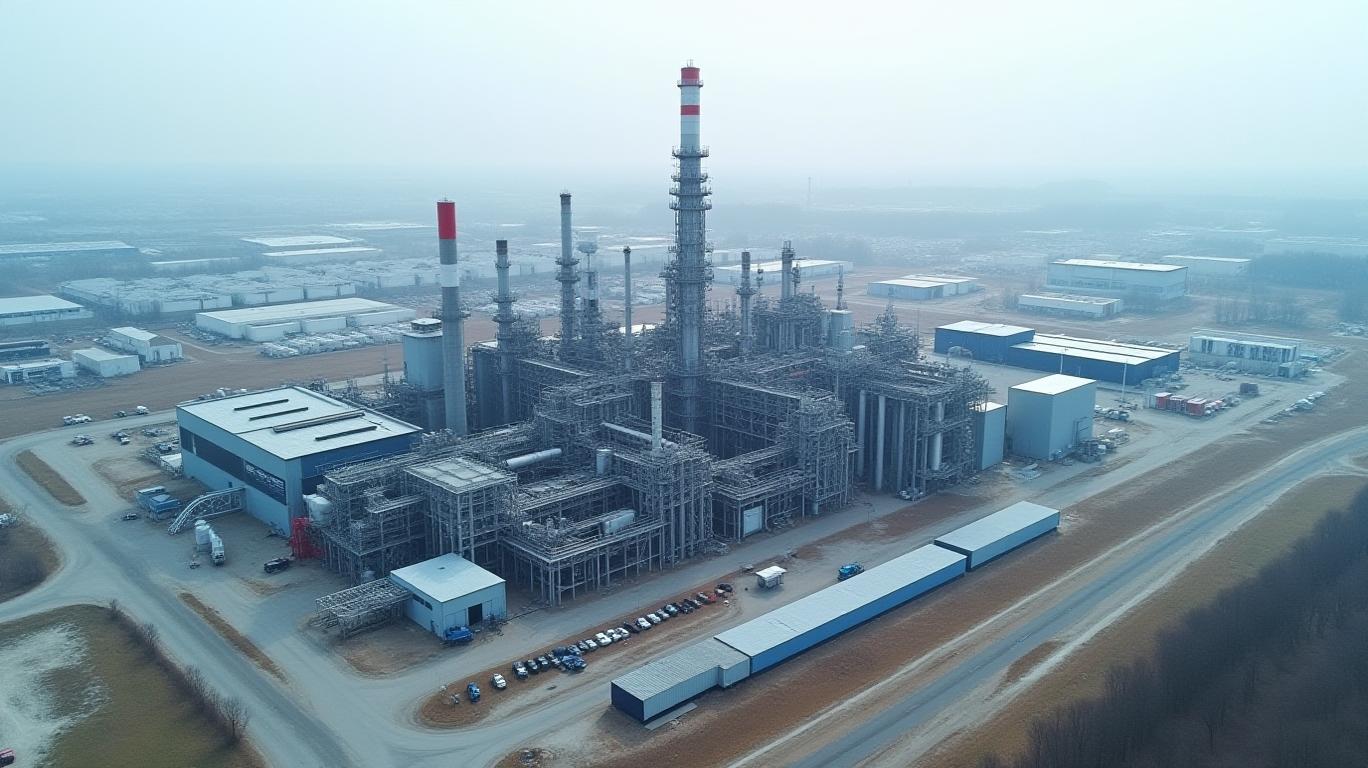AAM's Q1 2025 Results: Navigating Headwinds with Strategic Resilience
American Axle & Manufacturing (AAM) delivered its first-quarter 2025 financial results, revealing a company navigating a challenging automotive landscape with a mix of operational discipline and strategic foresight. While sales declined year-over-year, the quarter underscored AAM’s ability to manage costs and liquidity, positioning it for long-term growth amid industry shifts toward electrification and geopolitical uncertainties.
Ask Aime: How can AAM grow despite declining sales?

Key Financial Takeaways
AAM reported $1.41 billion in Q1 revenue, a 12.4% decline from the prior-year period, driven by lower production volumes across the North American automotive sector. Net income fell to $7.1 million, or $0.06 per share, down 65% from $0.17 per share in 2024. However, operating cash flow surged to $55.9 million, a 214% improvement over Q1 2024, reflecting strict cost controls and working capital management.
Adjusted EBITDA remained resilient at $177.3 million (12.6% of sales), slightly below 2024’s 12.8% margin but consistent with expectations. The company’s adjusted free cash flow improved to -$3.9 million, a marked turnaround from -$21.4 million in the same quarter last year, signaling progress in liquidity management.
Ask Aime: How does AAM's Q1 financial report reflect its strategic foresight and cost control measures amid the automotive industry's shift towards electrification and geopolitical uncertainties?
Strategic Priorities and Risks
AAM’s results highlight its dual focus on electrification and cost discipline, alongside navigating macroeconomic and geopolitical risks:
- Electrification Push:
- The proposed merger with Dowlais Group (expected to close by Q4 2025) remains a cornerstone of AAM’s strategy. The deal aims to combine AAM’s driveline expertise with Dowlais’s powder metallurgy and EV drivetrain capabilities, targeting $300 million in synergies.
AAM plans to expand its EV product line, with 90% of North American products already compliant with the U.S.-Mexico-Canada Agreement (USMCA), reducing tariff exposure.
Geopolitical and Operational Risks:
- Trade policies, particularly tariffs on Mexican and Canadian imports, remain a concern. aam aims to pass tariff costs to customers but faces uncertainty in execution.
North American light vehicle production estimates for 2025 (14.0–15.1 million units) underpin revenue projections, though volatility in this metric could strain margins.
Balance Sheet Management:
- Net debt stands at $2.1 billion, with a leverage ratio of 2.9x (based on LTM adjusted EBITDA). The company targets deleveraging through free cash flow generation, aided by the sale of its Indian commercial vehicle axle business (expected to close in Q2 2025).
Market Reaction and Valuation
Investors responded positively to AAM’s resilience, with shares rising 7.5% post-earnings to $4.08, nearing its 52-week high of $7.98. Analysts note a favorable PEG ratio of 0.07, suggesting undervaluation relative to growth prospects. However, the stock’s beta of 1.7 underscores its sensitivity to broader market swings, particularly in the automotive sector.
Outlook and Conclusion
AAM’s updated 2025 outlook reflects cautious optimism:
- Sales: $5.65–$5.95 billion (narrowed from prior guidance).
- Adjusted EBITDA: $665–$745 million.
- Free Cash Flow: $165–$215 million, assuming 5% capital expenditures.
While near-term risks—including USMCA compliance delays, macroeconomic headwinds, and trade policy uncertainties—pose challenges, AAM’s strategic moves position it to capitalize on long-term trends. Its focus on electrification synergies, cost discipline, and liquidity management align with a sector transitioning toward sustainability and technological innovation.
Final Analysis: AAM’s Q1 results demonstrate resilience in a tough environment, with operational improvements offsetting revenue declines. Investors should weigh its undervalued metrics and transformative potential against execution risks. For those eyeing a stake in the EV transition, AAM’s progress toward the Dowlais merger and its USMCA-aligned strategy make it a compelling, if volatile, play on automotive sector evolution.
Name |
|---|
| AbCellera BiologicsABCL |
| PepsicoPEP |
| AA MissionAAM |
In summary, AAM’s ability to balance short-term challenges with long-term strategic bets—backed by improving cash flow and a narrowing debt footprint—suggests it’s well-positioned to thrive as the automotive industry evolves.

_b905d9341749265671656.jpg)








